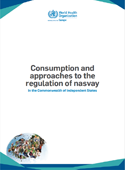Nasvay report flawed

The World Health Organization seems intent on discouraging tobacco smokers from switching from combustible cigarettes to smokeless tobacco products.
In a report published yesterday by its regional office for Europe, the WHO talks of a ‘risk’ in consumers switching from cigarettes to smokeless tobacco products.
The third conclusion of the report says that ‘…[w]ith reducing affordability of conventional cigarettes due to tobacco taxation in some CIS countries, there is a risk that consumers who currently smoke cigarettes will switch to using nasvay and other smokeless tobacco products’. ‘This should be carefully monitored and managed.’
In part, conclusion four says that ‘…[s]mokeless tobacco products should be regulated like all other tobacco products’. ‘In countries where use of smokeless tobacco is low, it might be appropriate to consider a pre-emptive comprehensive ban or other regulatory options to control smokeless tobacco production, turnover, importation and consumption.’
The report, Consumption and approaches to the regulation of nasvay in the Commonwealth of Independent States is said to look at smokeless tobacco use, specifically the use of nasvay in the CIS, but it casts its net wide in respect of products and countries.
In the first of its conclusions, the report says that several parties to the WHO’s Framework Convention on Tobacco Control had agreed that smokeless products should be regulated with the same rigor as traditional tobacco products are regulated.
And it says that other parties called for a comprehensive ban on existing and new smokeless tobacco products.
Although the report has in its sights all types of smokeless tobacco products; it seems, at the same time, to concede that the use of some such products is less risky than that of others; or even that the use of some is not risky at all. In the nasvay-specific section of the report’s section of The health effects of smokeless tobacco use; it says: ‘Nasvay can be considered a dangerous form of smokeless tobacco…’
